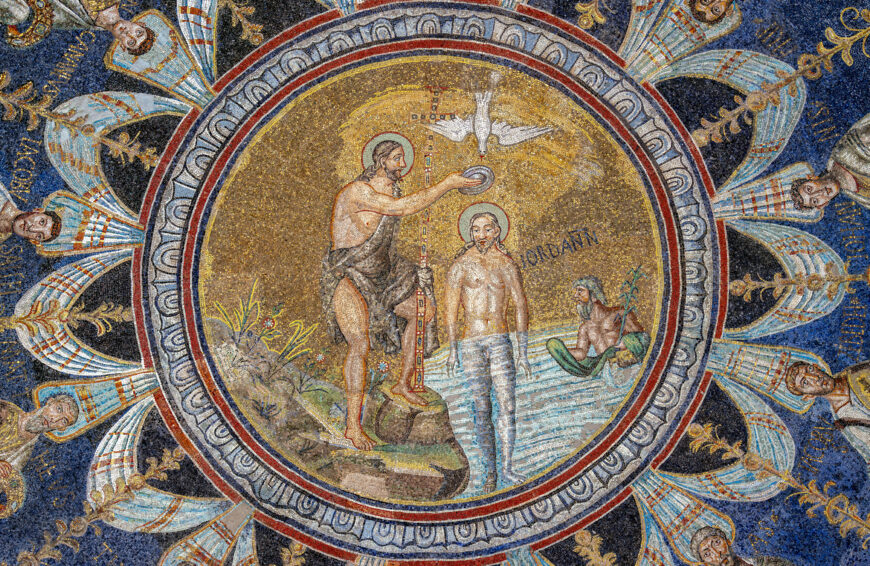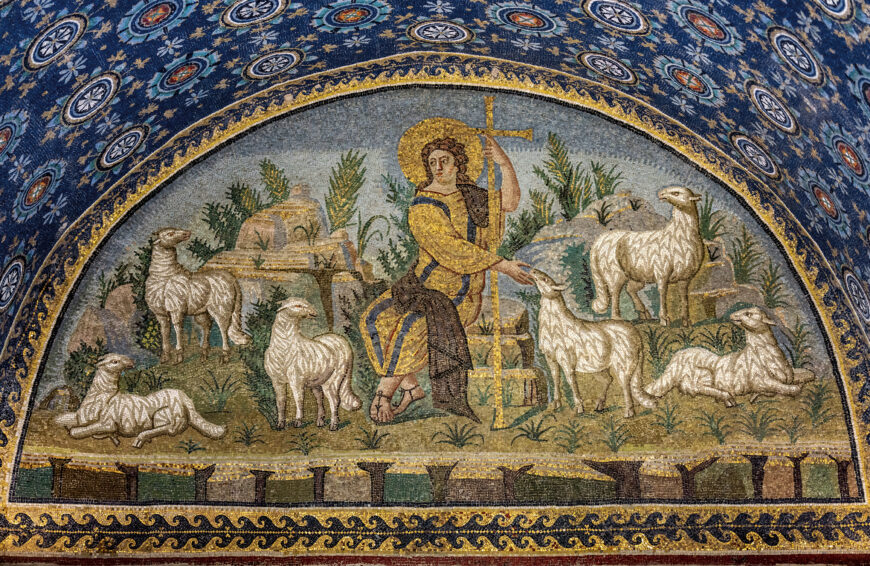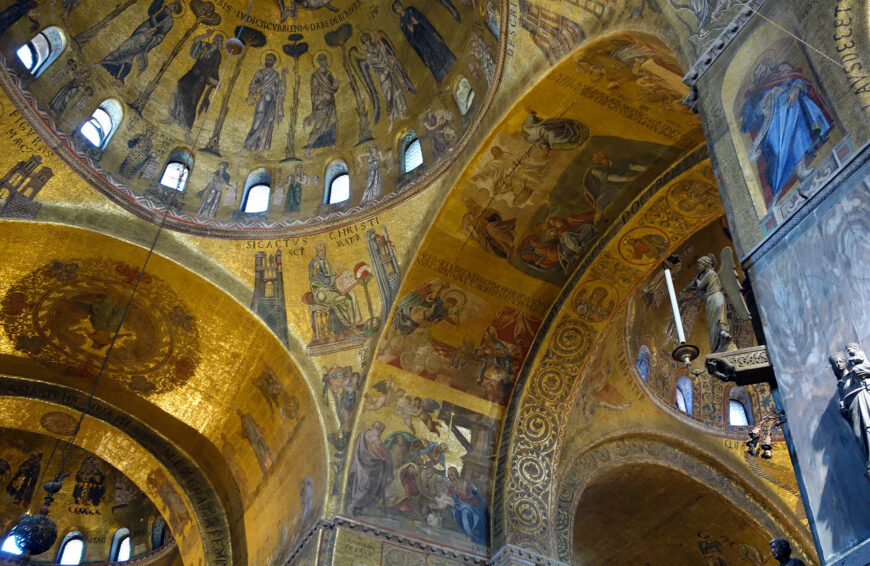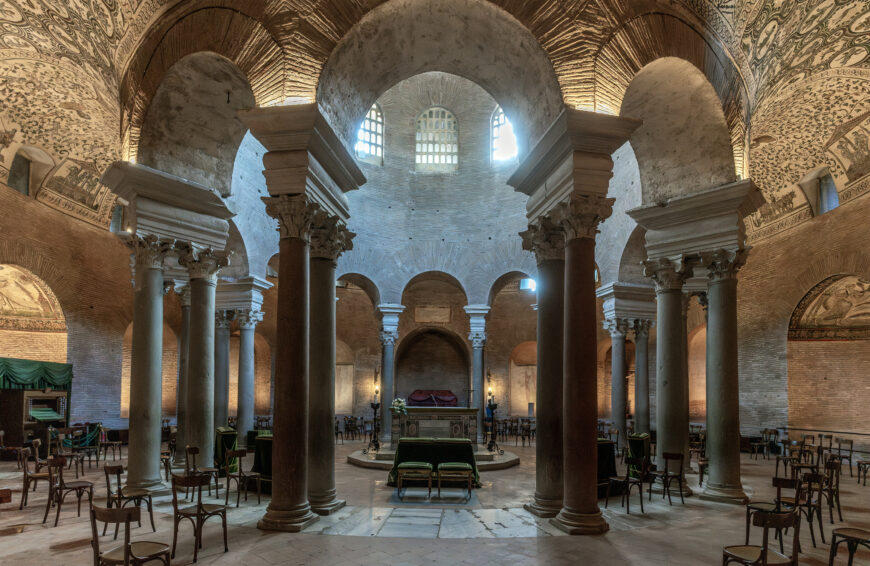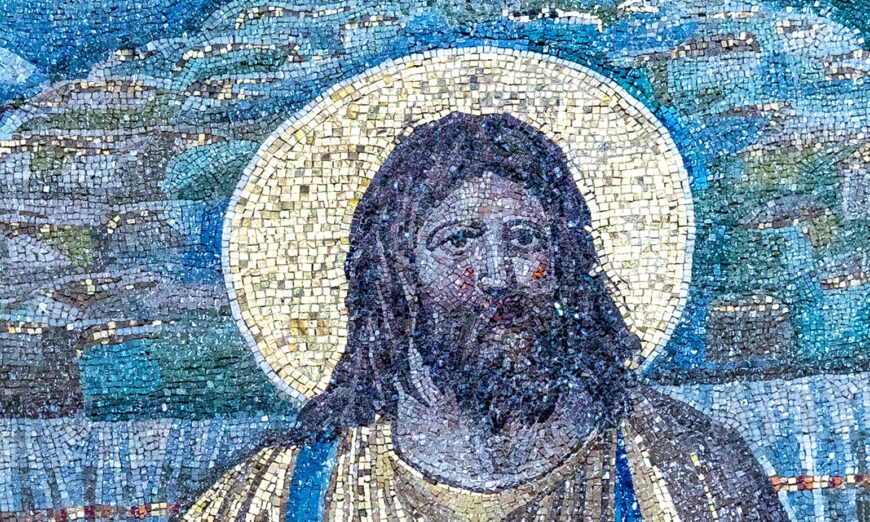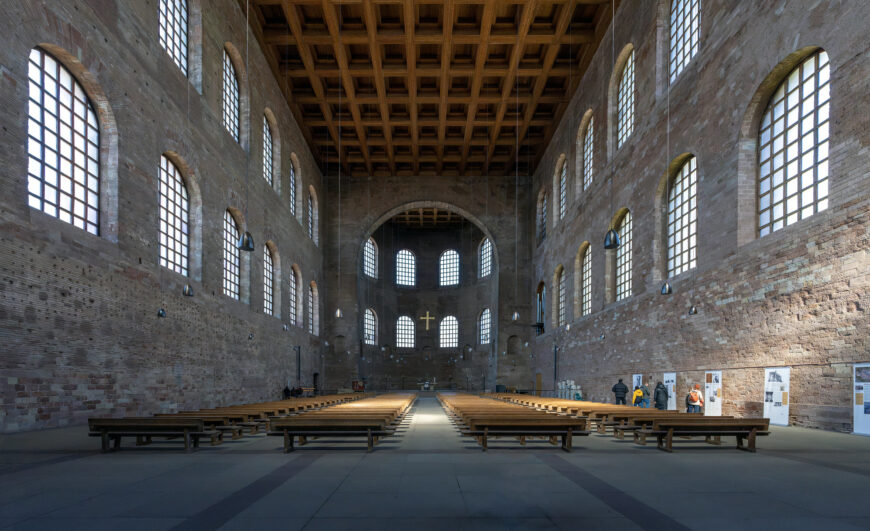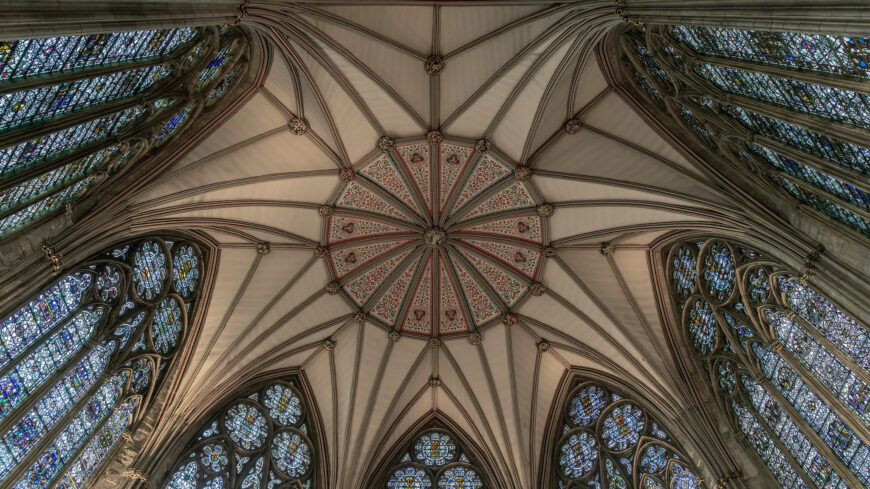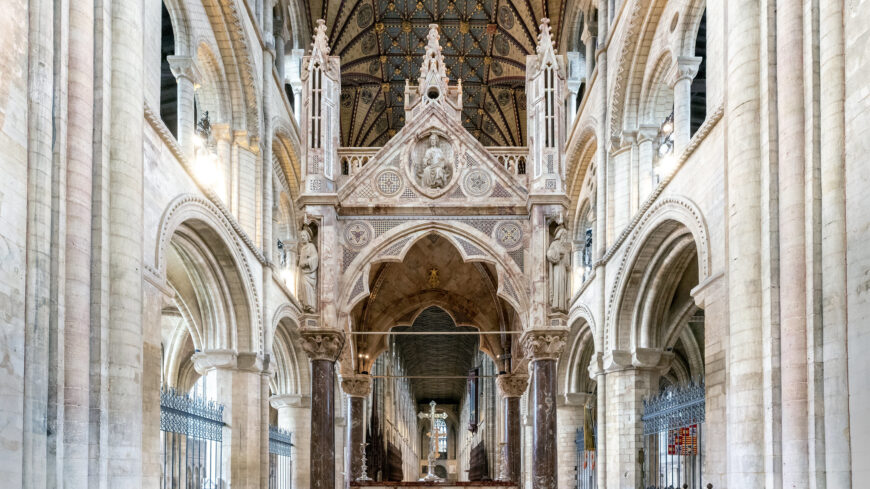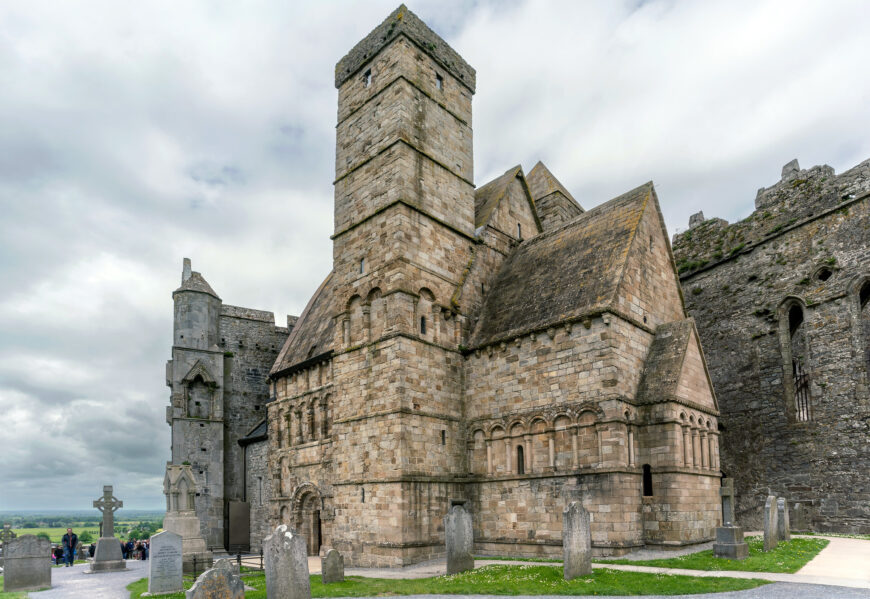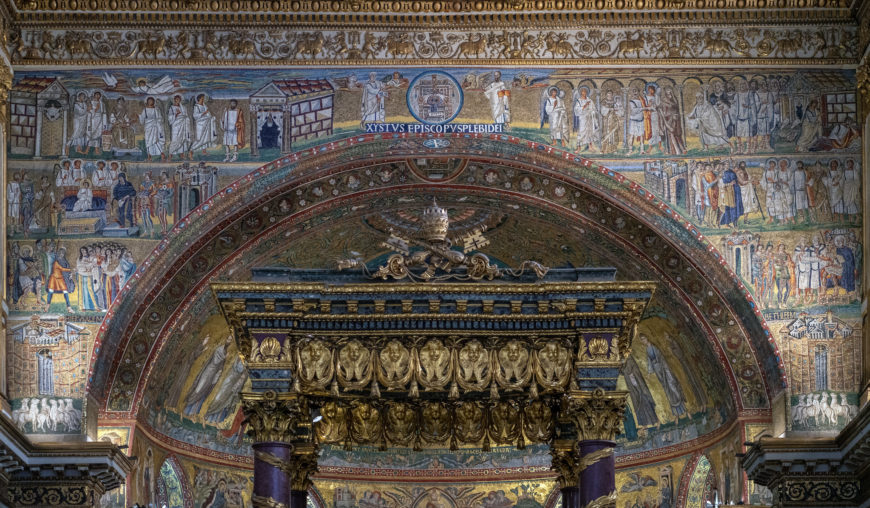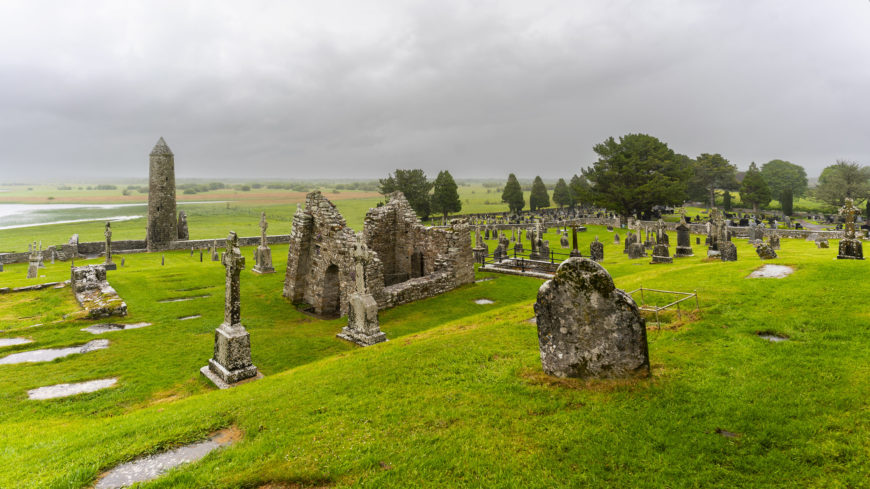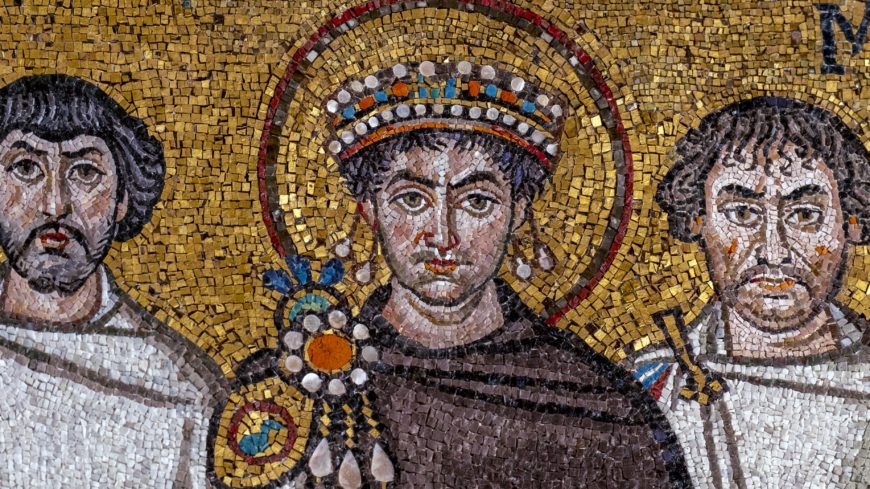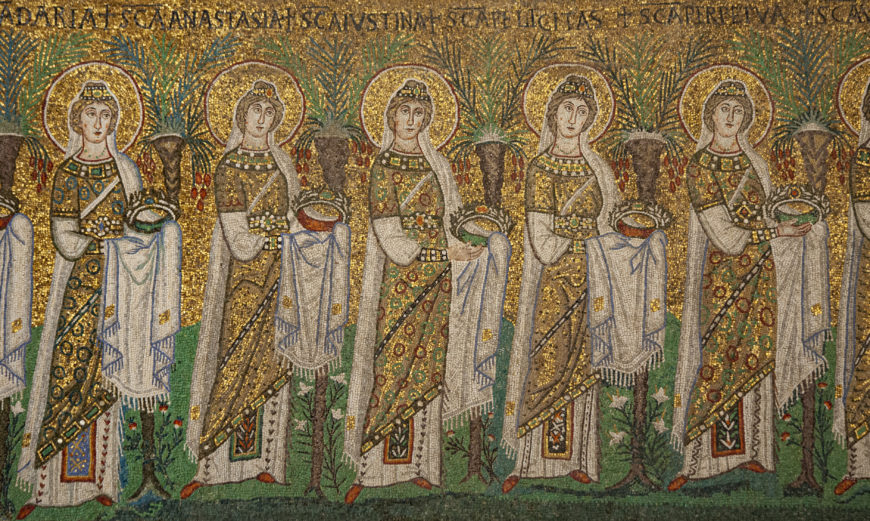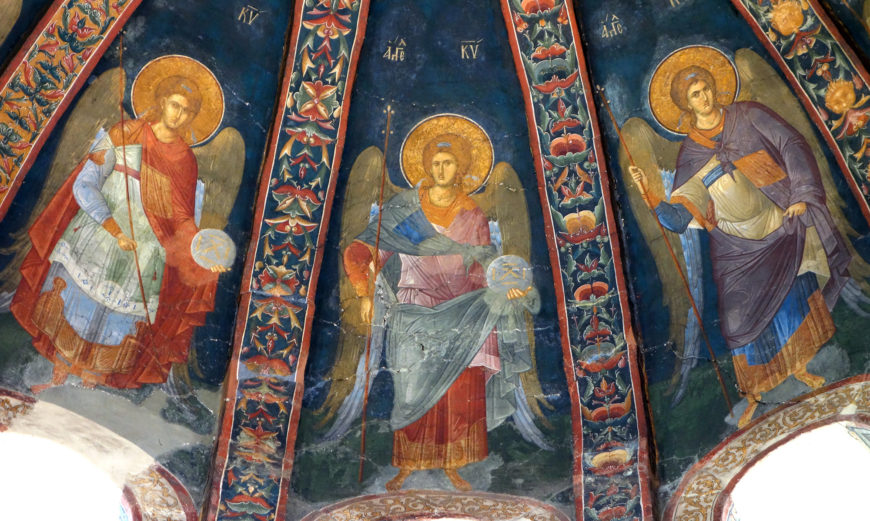Catacomb of Priscilla, Rome, late 2nd century – 4th century C.E.
Catacomb of Priscilla, Rome
[0:00] [music]
Dr. Steven Zucker: [0:05] We just walked through the Catacombs of Priscilla in Rome, and we’re now standing in a park just over the catacombs.
Dr. Beth Harris: [0:14] There are many catacombs in Rome, and these are places where the earliest Christians were buried. There are also Jewish catacombs here in Rome.
Dr. Zucker: [0:21] Which are even older.
Dr. Harris: [0:22] The Catacombs of Priscilla occupy about 10 kilometers, or more than 5 miles of burials.
Dr. Zucker: [0:28] This is a labyrinth of narrow passageways directly below the park that we’re in. If we were to dig down, we would hit the natural tufa, the stone of Rome, which is a soft material, which is why it was ideal for this kind of excavation.
[0:43] What’s amazing is that the passageways are stacked on top of each other and the catacombs [are], in certain places, three stories deep.
Dr. Harris: [0:50] Here we are in the north of Rome, and the reason that the catacomb is located here is that this was the villa of a wealthy Roman woman named Priscilla. It seems she donated the land as a place where at first her family would be buried, and then eventually the Christian community.
Dr. Zucker: [1:07] By the 5th century, a lot of people were buried here, some 40,000 tombs have been located. Imagine walking through a very dark passageway, a low ceiling, a rough earthen floor, and on either side of the narrow hall, horizontal niches that are just long enough to accommodate a body.
[1:23] Some are quite short and held children and some are longer and would have held adults, and many of them are stacked one atop the other. Wealthier people would have excavated a space large enough to place a sarcophagus in.
[1:35] Most of the tombs are for the poor, and these are simply bodies that were swaddled in a shroud and placed into these shelf-like slots, which were then covered over with a slab of marble, or, for the poor, just simply tiles of terracotta. All of that would then be covered over with a layer of plaster, which were often painted.
Dr. Harris: [1:54] The larger rooms have the name “cubiculum.” The horizontal shelves for burial are referred to as “loculi,” and now when we visit, the tombs are all empty and uncovered.
Dr. Zucker: [2:05] We think this is because there was grave robbing, and people were hunting for relics, which makes sense because some of the people that were buried here were martyrs.
Dr. Harris: [2:13] Right. They were killed for being Christians.
Dr. Zucker: [2:15] Their remains, then, had spiritual importance and power.
Dr. Harris: [2:18] Now, there is a kind of myth or legend around catacombs that they’re a secret place where Christians practiced their Christianity during times of persecution, but the catacombs are burial places. They were well known to the Christians in the community.
[2:32] It’s also important to remember that there were episodes of persecution against Christians, but also times when Christianity was somewhat tolerated. It’s not until 313, when Constantine issues the Edict of Milan, that Christianity becomes tolerated within the Roman Empire.
Dr. Zucker: [2:49] The catacombs themselves seem to go on endlessly, passages branching off with tombs as far as the eye can see, but what’s especially important is that these are the locations where we find the earliest Christian art.
Dr. Harris: [3:02] Art historians have wondered, why is it that Christianity exists for almost two centuries and we don’t have Christian art? Is it because it didn’t survive?
Dr. Zucker: [3:10] Is it because there wasn’t a Christian vocabulary that had been developed yet?
Dr. Harris: [3:14] Is it because of prohibition against the making of images because of the Second Commandment? It is also true that image-making, images of individuals and of gods, was very common in the Roman Empire, and Christians may have had a desire to separate themselves from paganism, and perhaps not making images was one way of doing that.
Dr. Zucker: [3:35] What we do know is that the first images that we’ve found date from the 3rd century, from the 200s, and some of the earliest art is, in fact, here at the Catacombs of Priscilla.
Dr. Harris: [3:44] In fact, what we think is the earliest known representation of the Madonna and child, we see an image of a woman nursing and another that points to the mother and child.
Dr. Zucker: [3:53] And seems to be holding a book.
Dr. Harris: [3:55] If so, that’s a remarkably early image of a subject that would become so common for more than a millennium in Western art history.
Dr. Zucker: [4:03] And so, what we think we see here are numerous scenes that are among the earliest inventions of Christian iconography, of Christian symbolism. We find them both painted, and we find them carved.
[4:13] Within the catacombs we see lots of inscriptions that speak to the people that were buried, and there were also inscribed Christian symbols. We find the anchor, which speaks to safe harbor, that is a reference to salvation. There are representations of a fish, which is a reference to Christ.
Dr. Harris: [4:29] But we also begin to see very specific subject matter that relates to Christian themes of salvation; subjects from both the Old and New Testament.
Dr. Zucker: [4:38] This is especially true in one small cubiculum that we call the Greek Chapel. Now, this was not a chapel, and it had nothing to do with the Greeks. It has this name simply because we found some Greek letters there. In fact, throughout the catacombs there’s both Greek and Latin.
Dr. Harris: [4:52] It was decorated with what art historians call Roman First Style wall painting, that is, plaster built up and then painted to imitate marble panels. So, there’s an attempt to make this a very rich space.
Dr. Zucker: [5:04] This must have been one of the oldest parts of the catacombs because it is adjacent to the basement of the original house that had been owned by Priscilla. It is lavish, but it is also small.
Dr. Harris: [5:14] It would have held several sarcophagi for members of this family, and there were meals that were taken in these spaces as part of a memorial to the dead.
Dr. Zucker: [5:23] There are so many scenes here. There are scenes from the Old Testament, there are scenes from the New Testament.
Dr. Harris: [5:28] They refer to divine intervention, to figures who suffered on account of their faith, including the story from the Book of Daniel of three youths in the fiery furnace. The story from the Old Testament is that these three youths were asked to worship a pagan golden idol and they refused and were sentenced to be burned alive, but were saved.
[5:49] You can see why this was a subject that really appealed to early Christians, who at various times were persecuted for their faith.
Dr. Zucker: [5:57] There are also New Testament scenes. There’s the Adoration of the Magi, there’s the resurrection of Lazarus.
Dr. Harris: [6:02] These are scenes that refer to the miracles that Christ performed during his life, and very often in early Christian imagery we have an emphasis on the teaching of Christ, on the miracles that he performed. It’s really only later that we get the subjects that we’re more familiar with of the Crucifixion or the Resurrection.
Dr. Zucker: [6:22] A good example of the way that the portrayal of a scene has changed is the sacrifice of Isaac. This is an Old Testament scene. In this case, we only have a partial view, the bottom portion has been destroyed, but what remains shows Abraham in the center and Isaac, off to the right, carrying wood.
[6:39] This is different from what is normally depicted in later Christian art, where we generally see Isaac about to be killed by Abraham, Abraham’s wrist stayed by an angel.
Dr. Harris: [6:47] You could ask, why would the first Christians be painting this Old Testament subject of Abraham and Isaac? The first Christians looked back to the story of Abraham and Isaac as a type of Christ. That is, Abraham’s willingness to sacrifice his son foretold, foreshadowed, God’s willingness to sacrifice his only son, Christ, for the salvation of mankind.
Dr. Zucker: [7:10] But one of the most interesting scenes is a scene that is called the “Breaking of the Bread.” This might at first glance look a bit like a Last Supper. We see a still life, a long table, and 7 men seated behind it.
[7:23] We don’t have the 12 apostles and Christ. Simultaneously, there are 7 baskets, 3 on one side and 4 on the other, filled with bread. There are fish on the table, and so there seems to be a reference here not only to the Eucharist, but also to the story of the multiplication of loaves and fishes.
Dr. Harris: [7:40] Both a reference to a miracle that Christ performed during his life, which is typical in early Christian iconography, but also perhaps a reference to the liturgy, that is, to the practice of the Eucharist, of the bread and wine being taken as the body and blood of Christ.
Dr. Zucker: [7:55] What we’re seeing here is the invention of Christian iconography. These are scenes that have not yet been set, that have not yet been clarified. Looking at that particular image is really quite marvelous. To see the foreshortening of the dishes on the table, seen in space. It reminds us that these are people that would have had access to very sophisticated Roman painting.
Dr. Harris: [8:14] The other cubiculum that we wanted to talk about is known as the “Cubiculum of the Veil.” This is because there is a depiction of a woman in a veil in this chapel. It’s actually the same woman being depicted three times. The reference to the woman who is deceased, who is buried in this space.
[8:30] On the left, we see her being married, with a seated bishop officiating. On the right, we see her seated in a chair, nursing.
Dr. Zucker: [8:38] We think that the chair is actually the chair that was used for childbirth as well.
Dr. Harris: [8:42] We have a reference to her marriage, to her motherhood and then we see her again in the center, this time larger in a pose that art historians called “orant.”
Dr. Zucker: [8:52] This is a pose of prayer, meant to represent the woman in the afterlife, the woman resurrected. This is all enclosed within a lunette at the back of the cubiculum. She is representing the hope of the family that she would enjoy a blessed afterlife.
Dr. Harris: [9:05] Her eyes look upward toward heaven. This is clearly an image that refers to her salvation and her place in heaven.
Dr. Zucker: [9:12] The painting is not in particularly good condition, but we can make out some of the careful articulation of the features of the face, and the shadow placed under her chin to create a sense of illusionism.
Dr. Harris: [9:22] And so, even though her hands are too large for the proportions of her body, her face is represented naturalistically.
Dr. Zucker: [9:29] It’s important to remember that we are now looking at this painting under electric lights, but it would certainly have been painted in the dim light of oil lanterns.
Dr. Harris: [9:36] In fact, there are spaces, there are small holes throughout the catacombs where oil lamps would have been placed.
Dr. Zucker: [9:42] But the largest painting in this room is in this shallow dome of the ceiling. Here in the center, we see Christ represented as the Good Shepherd. He’s surrounded by three goats, one over his shoulders, and he’s in a stance that is reminiscent of contrapposto.
[9:56] Clearly, the artist was somebody who had been familiar with Roman sculpture and perhaps Roman painting. Christ is represented young, he has no beard. And beside him are two trees with doves at the top. The notion here is that Christ will care for his followers the way that a good shepherd cares for his flock.
Dr. Harris: [10:12] Although Christ stands naturalistically, he is represented in the center, frontal, with goats on either side and bushes with the doves on either side. We have an image that’s very symmetrical, and I think in that way speaks to something transcendent, something heavenly.
Dr. Zucker: [10:27] We have more symbols that surround the central roundel.
Dr. Harris: [10:30] We see peacocks, which are a symbol of eternal life.
Dr. Zucker: [10:34] Other birds that we think are quail, symbols of the earth, that walk on the earth.
Dr. Harris: [10:37] Christ as in between the earthly and the heavenly.
Dr. Zucker: [10:41] Then in the four pendentives, there are images of doves with olive branches. What we’re seeing here is the very first tentative steps in what will become the great tradition of Christian art.
[10:51] [music]
| Title | Catacomb of Priscilla |
| Artist(s) | Unrecorded artist |
| Dates | late 2nd century–4th century C.E. |
| Places | Europe / Southern Europe / Italy |
| Period, Culture, Style | Medieval / Early Christian |
| Artwork Type | Architecture / Tomb |
| Material | Rock |
| Technique |


